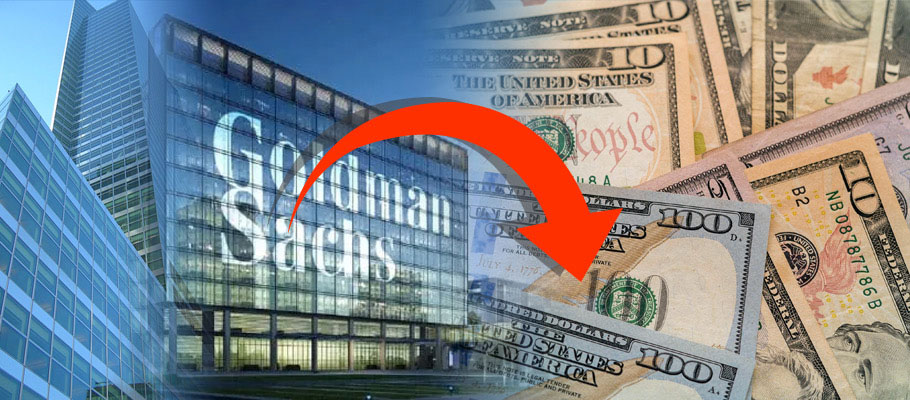
Published: April 9th, 2025
The Pound to Dollar rate experienced a steep sell-off last week but could climb back if continued negative takes on the robustness of the US economy and a deterioration of other important metrics weigh on the Greenback this week.
GBP/USD dropped close to 1.99 per cent on Friday April 4th as the escalating trade stare-down between Washington and Beijing intensified a meltdown in global equity markets. The US Dollar benefitted amid the turmoil from its safe haven status, coming back notably from the previous day's losses.
The gains may be short lived however given widespread pessimism over how the American government's sweeping new tariff regime will impact US economic growth. In an investor note published this week, analysts at Wall Street banking giant Goldman Sachs captured investor concerns about what the levies may herald for US bonds, equities, and USD.
‘We are re-calibrating our outlook for the Dollar in the coming quarters. We now expect the USD weakness seen in Q1 to persist and deepen.’
Goldman raised its forecasts for numerous currencies relative to the Greenback last week, including the Pound, which is now expected to rise to 1.32, 1.35 and 1.38 over three, six and 12 month timeframes. Each represents an uplift from earlier Goldman projection.
The bank's analysts believe Trump's tariff strategy will diminish the spending confidence of companies and households, causing economic growth to shrink while undermining a transatlantic growth differential that has kept the Greenback ‘overvalued’ overvalued and ‘inflated US equity markets for 10 years or more.’
In November 2024, Goldman analysts were calling the Pound a potential ‘hidden gem’ in their most recent year-ahead forecast. Published on November 19th, the bank's report listed a set of post-election targets pointing to solid gains for Sterling in the coming months.
Pointing to GBP's ‘bullish set-up,’ Goldman said the Pound ‘should keep pace with a broader appreciation in the Dollar.’ Given Goldman Sachs' central position in the global financial architecture, the bank's outlook influenced how traders set their expectations of the forex market in the coming months.
One prediction in the year-ahead forecast was for the Pound to Euro exchange rate to rise well above 1.20. ‘We have maintained a constructive view of GBP over much of 2024, and we believe the rationale is still there for ongoing outperformance by Sterling on G10 crosses over the next few months.’
Goldman's report landed in the aftermath of Donald Trump's US presidential election victory, which also saw his Republican Party win majorities in both houses of Congress.
Trump 2.0 looked ready to shake up global trade while strengthening America's economy, a scenario which would have kept US interest rates ‘higher for longer’ than other major currencies.
New US import tariffs were expected to hit the Eurozone's all-important exports hard, while higher Fed rates might ultimately mean gains for the Greenback.
‘We see that as a powerful supportive mix for the Dollar,’ Goldman's report adds. ‘As a result, we are no longer looking for broad depreciation by USD, even on a six or twelve-month timescale. We see USD staying stronger for longer.’
In August 2024, Sterling faced down an extended selloff against a backdrop of sinking global stock markets and worries that the US economy was faltering.
The Pound to Euro rate dropped 0.60 per cent on 21st August after the Bank of England (BoE) cut interest rates by 25 basis points. US equities markets fell the day after as earnings from big technology companies came in well below expectation.
A research note from Capital Economics said those factors created additional selling pressures in the Asian session, when Japan's Nikkei 225 index fell by more than over five per cent. ‘In our view, such a steep and sudden decline points to a wider bout of global risk aversion.’
Risk-averse sentiment can negatively impact Sterling, which was already feeling the pressure after the Bank of England made its rate cut. The Pound to Euro conversion fell below 1.18 on Tuesday 6th August to touch 1.1773, a level last seen in early July.
Historically, GBP tends to lose value against USD, EUR, CHF and Yen when market sentiment turns gloomy. It can also gain against 'high beta' currencies like the Norwegian Krone and the Australian and New Zealand dollars.
‘Stock markets fell globally as fear trading took over in advance of the crucial US job print,’ wrote Capital Economics' analysts. ‘Many sectors are experiencing a selloff, with tech firms suffering worst after investors punished Intel, Amazon, Apple and others for poor earnings.’
In April, The GBP/EUR exchange rate moved to the 1.17 threshold following publication of GDP figures showing Britian's UK economy grew 0.1 per cent month-on-month in February 2024, while an upward revision to January's figure (from 0.2. per cent to 0.3 per cent) added to the good news.
The combined numbers from the Office of National Statistics (ONS) effectively guarantee that the quarterly figure will indicate a return to growth, ending the low-level recession seen in the second half of 2023. A Q1 contraction would mean that UK GDP declined by a full percentage point in March, something economists see as highly unlikely.
Sterling was up against most of its peers at mid-month, though the Pound to Dollar rate struggled to get beyond 1.2537 thanks to a broader Greenback rally driven by the release of strong US inflation and labor market prints.
Production output drove the majority of UK growth in February, expanding by 1.1 per cent. The UK's large services sector grew by 0.1 per cent in February and by 0.3 per cent in January.
Analysts said any upside potential from the GDP figures could be hemmed in by the relatively small advance in the figures, which aren't big enough to significantly stimulate inflation.